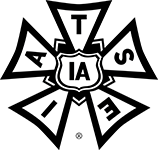

.
Click here to download the app on your Apple device.
Click here to download the app on your Android device.
What is the cold stress app?
The App is designed to assist employers and workers in assessing risks and applying safety protocols on worksites affected by cold weather. The app uses a cold stress risk assessment method accepted by WorkSafeBC to determine the potential for hazardous exposure to workers.Why create an app?
Since British Columbia's temperatures have been declining over time, IATSE 891 took the initiative in creating the app to enable workers to evaluate their individual risk. Cold stress can occur in those who have to work in cold and/or damp conditions. This occurs when your body's internal temperature drops, and it is unable to reheat itself. Among the signs of cold stress in workers are shivering, frostbite, and hypothermia, which can be fatal. The most important warning indicator is feeling cold because it indicates that your body is losing heat faster than it is generating it.How does the app work?
The software uses the internet connection on your device to retrieve wind speed and temperature data from a nearby monitoring station or the local weather office. You can use a thermometer that detects wind/air velocity—which is readily accessible at most hardware stores—for more accurate and direct measurements. Cold stress results, gives evidence of risk that can be shared with supervisors and safety representatives.What do I do if the app gives me an unsafe reading?
Take a screenshot of the app reading and send it or report it to your supervisor. Your supervisor should take it to production and there should be steps taken to ensure safety bulletins and other measures are put in place to protect workers. Check out our guide on recognizing and preventing cold stress at work, as outlined by WorkSafeBC, here.The below resource is from WorkSafeBC and more info can be found on their website.
How to protect workers
The most effective way to reduce the risk of cold stress is to eliminate the source of exposure. If that's not possible, there are other risk controls to use. When choosing risk controls, start by asking yourself the questions in the following steps, which are listed in order of effectiveness.-
Elimination or substitution
Eliminating the hazard by substituting a safer process or material, where possible, is the most
effective control.
Some question to consider:- Can the work be done in a different environment?
- Can a process that generates less cold or water be used?
-
Engineering controls
Making physical modifications to facilities, equipment and processes can reduce exposure.
Some questions to consider:- Can heated warming shelters be placed on site?
- Can machines and tools be designed so that they can be operated without having to remove mittens or gloves?
-
Administrative controls
These involve changing work practices and work policies. Providing awareness tools and training also count as administrative controls. All can limit the risk of cold stress.
Some questions to consider:- Has an exposure control plan been developed?
- Can warning signs be posted in the work area?
- Can work rotation be used to decrease cold exposure?
- Can signs explaining exposure symptoms be posted?
- Can written safe work procedures be posted?
- Can work be paced differently so that workers don’t have to exert themselves to the point of heavy sweating?
- Have workers received training and education to increase awareness of signs and symptoms of cold stress?
-
Personal protective equipment
This is the least effective control. When used, there must always be at least one other control in place as well.
Some question to consider:- Can personal battery-operated heathers or chemical heating pads under clothing be used?
- Do workers have the proper protective clothing? (They need a warm head covering and layered clothing. They also need to keep hands and feet warm and dry.)
- Has personal protective equipment been tested to make sure it is working properly?








